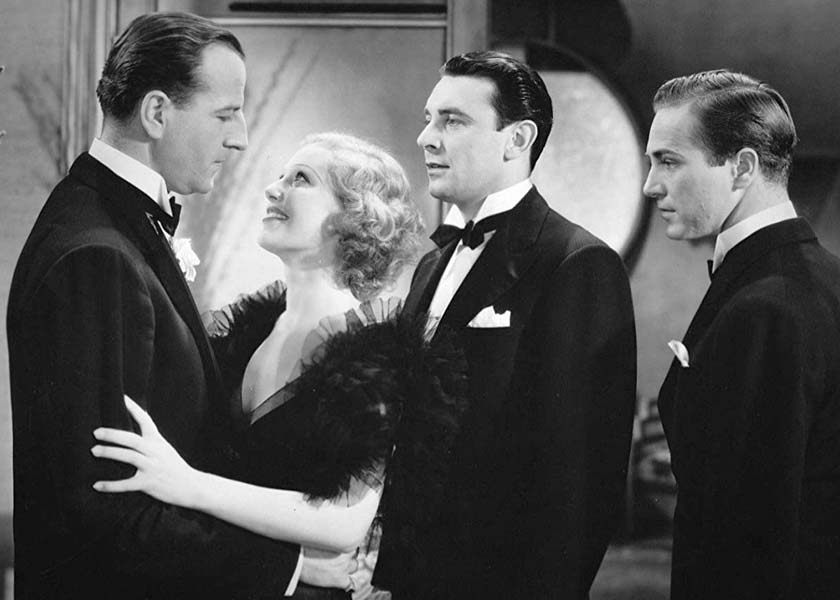Synopsis
Visiting a small Kansas town, Jimmy Decker (Manners) romances pretty Marion Cullen (Young). Decker leaves the disappointed Marion and returns to New York City. Marion learns that her supposed parents had adopted her. Realizing that she is not very attached to them, she leaves home and follows Jimmy to New York, hoping to marry him.
Disappointment awaits Marion in New York. Jimmy is engaged and will marry soon. He introduces Marion to his friend Dr. Tony Travers (Brent) who is attracted to her. Not wanting to go back to Kansas, Marion seeks a job with a musical show and is hired by producer Ford Humphries (Louis Calhern) as a rehearsal pianist. Marion meets showgirl Dixie Dare (Merkel) and becomes her roommate. Marion shows Humphries some music she has written. Romantically interested in Marion, Humphries makes advances that Marion rejects, and he fires her. He appropriates her music for his show without crediting or compensating Marion.
Jimmy, returned from his honeymoon, wants to renew his romantic relationship with Marion who tells him about her stolen music. At a party in Humphries terraced suite, Humphries and Jimmy argue over Marion. During the altercation, Humphries stumbles, falls from his terrace, and is critically injured. To shield Jimmy from arrest, Marion says she pushed Humphries. Dr. Travers operates on Humphries who regains consciousness long enough to exonerate Marion. Marion admits her love for Tony and agrees to marry him.
Discussion
An example of the economical women’s films
made by Warner Bros. and other
studios in the 1930s, They Call it Sin is a weakly-plotted romantic
drama revolving around a beautiful and innocent young woman (played by
nineteen-year-old Loretta Young, looking suitably delicate and vulnerable) who is
threatened to sin
by two handsome and wealthy, but morally corrupt, men.
Although tempted, she resists them and wins the love of a better man, equally
handsome but also faithful and clean-living. The film is based on a 1932 novel of
the same name written by writer Alberta Stedman Eagan, who specialized in romantic
fiction intended for women readers. In its review of the film,
Variety suggested that the studio used the
sexy title for gate appeal…of a so-so flicker.
(The same concept
applies to the book: a hot
title increases its cover
appeal to
women.)
Director Thornton Freeland had an undistinguished career. He began as an assistant cameraman in 1926 and advanced to positions as assistant director and production manager before directing his first film, Three Live Ghosts (1929), with youngsters Joan Bennett and Robert Montgomery in the cast. Freeland directed several interesting films in the early 1930s, including Whoopee (1930), starring Eddie Cantor, Flying Down to Rio (1933), the first pairing of Fred Astaire and Ginger Rogers, and George White's Scandals (1934), starring Rudy Vallee, Jimmy Durante, and Alice Faye. In 1934, Freeland moved to England to make a version of Brewster's Millions (1935), starring Jack Buchanan. These films are the best of his career. During seven years in England, Freeland directed nine films of steadily declining quality. Returning to Hollywood in 1941, he directed two B-level films and then spent several years in war-related work. After the war, Freehand directed three final B pictures and retired in 1950, at age 52. His remaining life seems to have been spent in leisure, occasionally visiting, but not working in, Hollywood. Thornton Freehand died in Fort Lauderdale, Florida in 1987, age 89.

